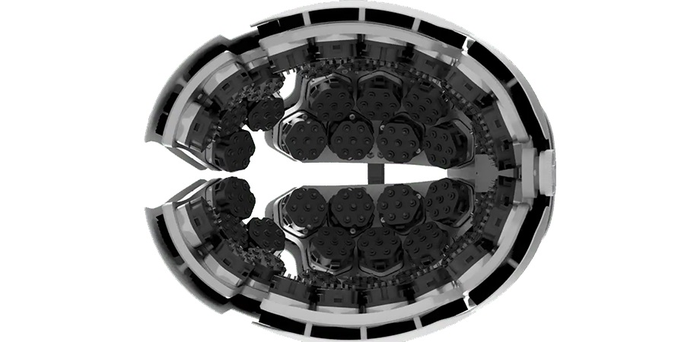Recent advances in brain imaging techniques facilitate accurate, high-resolution observations of the brain and its functions. For example, functional near-infrared spectroscopy (fNIRS) is a widely used noninvasive imaging technique that employs near-infrared light (wavelength >700 nm) to determine the relative concentration of hemoglobin in the brain, via differences in the light absorption patterns of hemoglobin.

Credit: Image courtesy of Kernel.
Recent advances in brain imaging techniques facilitate accurate, high-resolution observations of the brain and its functions. For example, functional near-infrared spectroscopy (fNIRS) is a widely used noninvasive imaging technique that employs near-infrared light (wavelength >700 nm) to determine the relative concentration of hemoglobin in the brain, via differences in the light absorption patterns of hemoglobin.
Most noninvasive brain scanning systems use continuous-wave fNIRS, where the tissue is irradiated by a constant stream of photons. However, these systems cannot differentiate between scattered and absorbed photons. A recent advancement to this technique is time-domain (TD)-fNIRS, which uses picosecond pulses of light and fast detectors to estimate photon scattering and absorption in tissues. However, such systems are expensive and complex and have a large form factor, limiting their widespread adoption.
To overcome these challenges, researchers from Kernel, a neurotechnology company, developed a wearable headset based on TD-fNIRS technology. This device, called “Kernel Flow,” weighs 2.05 kg and contains 52 modules arranged in four plates that fit on either side of the head. The specifications and performance of the Kernel Flow system are reported in the Journal of Biomedical Optics (JBO).
The headset modules feature two laser sources that generate laser pulses less than 150 picoseconds wide. The photons are then reflected off a prism and combined in a source light pipe that directs the beam to the scalp. After passing through the scalp, the laser pulses are captured by six spring-loaded detector light pipes that are 2 mm in diameter and then transmitted to six hexagonally arranged detectors 10 mm away from the laser source. The detectors record the photon arrival times into histograms and are capable of handling high photon count rates (those exceeding 1 × 109 counts per second).
To demonstrate its performance, the Kernel Flow system was used to record the brain signals of two participants who performed a finger-tapping task. During the testing session, histograms from more than 2,000 channels were collected from across the brain to measure the changes in the concentrations of oxyhemoglobin and deoxyhemoglobin.
The system was found to match conventional TD-fNIRS systems. “We demonstrated a performance similar to benchtop systems with our miniaturized device as characterized by standardized tissue and optical phantom protocols for TD-fNIRS and human neuroscience results,” explains Ryan Field, the Chief Technology Officer at Kernel and the corresponding author of the study.
While the results are promising, Field acknowledges the need for more testing as near-infrared light is absorbed differently by certain hair and skin types. “We are currently collecting data with Kernel Flow to demonstrate additional human neuroscience applications. We are also in the process of evaluating the performance of the system with different hair and skin types,” he says.
Kernel Flow packages large-scale TD-fNIRS systems into a wearable form, delivering the next generation of noninvasive optical brain imaging devices. Systems like Kernel Flow will make neuroimaging much more accessible, to enable widespread benefits in health and science. For instance, the FDA recently authorized a study using the Kernel Flow system to measure the psychedelic effect of ketamine on the brain.
JBO guest editor Dimitris Gorpas of the German Research Center for Environmental Health remarks, “This is the world’s first wearable full-head coverage TD-fNIRS system that maintains or improves on the performance of existing benchtop systems and has the potential to achieve its mission of making neuro measurements mainstream. I am really looking forward to what the brain has yet to reveal.”
Read the open access article by H.Y. Ban et al., “Kernel Flow: a high channel count scalable time-domain functional near-infrared spectroscopy system,” J. Biomed. Opt. 27(7) 074710, doi 10.1117/1.JBO.27.7.074710.
Journal
Journal of Biomedical Optics
DOI
10.1117/1.JBO.27.7.074710
Article Title
Kernel Flow: a high channel count scalable time-domain functional near-infrared spectroscopy system
Article Publication Date
18-Jan-2022




